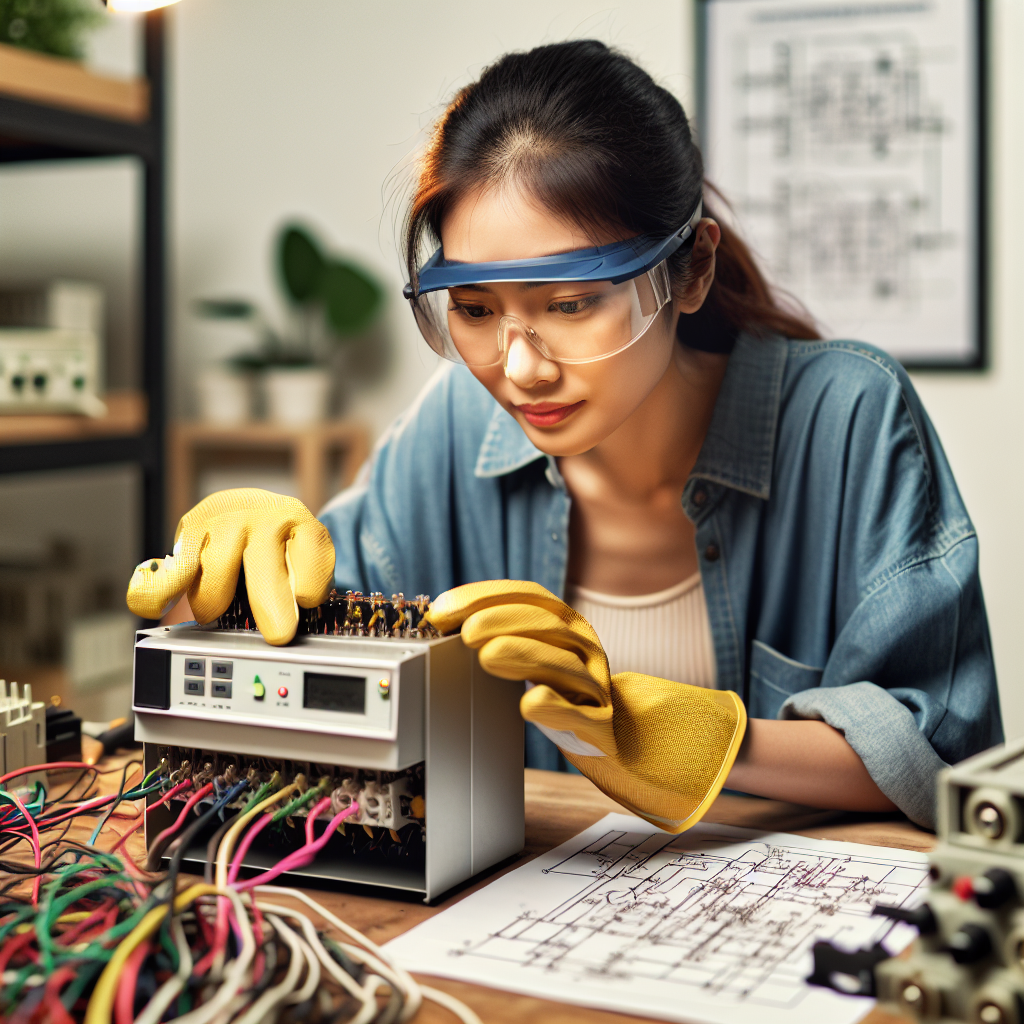- All
- Product Name
- Product Keyword
- Product Model
- Product Summary
- Product Description
- Multi Field Search
Views: 0 Author: Site Editor Publish Time: 2024-04-16 Origin: Site








If you want to check if a voltage stabilizer is working properly, you can follow these steps:
1.Visual Check: First, look at the stabilizer. If it has a power indicator light or display, check if it's on. Also, look for any physical damages, burn marks, or loose connections.
●Indicator Lights: Most voltage stabilizers have indicator lights. If the power light doesn't work or is blinking inconsistently, it could be a sign of a malfunction. The same goes for any other system lights or digital displays that aren't behaving as they should.
●Physical Damage: Any visible damages, such as cracks, dents, or parts coming loose, can suggest a faulty stabilizer. The stabilizer should be sturdy and in good physical condition.
●Burn Marks or Smell: If you see any burn marks or smell a burning or a strong electrical odor, it's a significant sign of a problem. This could indicate that the stabilizer has overheated or suffered from a power surge.
●Loose or Damaged Wires: Check for any loose or damaged wires. If the wires are frayed, broken, or not properly connected, it can cause the stabilizer to malfunction.
●Strange Sounds: Odd or loud noises coming from the stabilizer, such as buzzing, cracking, or humming sounds, could indicate a problem.
●Leakage: In some stabilizers, such as oil-cooled stabilizers, if there's any sign of oil leakage, it could indicate a fault in the device.
If you notice any of these signs, it's prudent to consult a professional to diagnose and fix the issue. Remember that dealing with electrical devices can be dangerous if not done properly, so don't try to fix it yourself if you're not experienced.

2.Voltage Measurement: To perform this test, you will need a multimeter, which is a tool that can measure voltage, current, and resistance. First, measure the input voltage of the stabilizer (the voltage from the power source). Then, measure the output voltage of the stabilizer (the regulated voltage).
These two measurements should reflect the stabilizer's operation - the input voltage should fall within the operational range of the stabilizer, and the output voltage should ideally be at the stabilizer's rated output, indicating it is regulating properly.
3.Consistent Output Test: Measure the output voltage for a longer period and see if it remains constant even when there are fluctuations in the input voltage. A working stabilizer should maintain a stable output voltage despite fluctuations in the input voltage.
4.Device Test: Connect a simple electronic device, like a lamp or a fan, to the stabilizer and check if it works properly. If the device works as expected, it indicates that the stabilizer is working fine. However, if the device malfunctions, flickers, or experiences changes in operation, it might suggest an issue with the stabilizer.
5.Professional Check: If you suspect that something is wrong with the stabilizer, but cannot determine the problem yourself, consider seeking help from a professional. They have specialized equipment and knowledge to diagnose and fix the problem.
Please remember to be extremely careful while conducting these tests. If you're not familiar with handling electrical equipment, it's better to seek help from a professional.

The frequency at which you should inspect voltage stabilizer would depend on several factors such as the usage environment, how often the stabilizer is used, and the quality and age of the equipment.However, as a general guideline, a thorough visual inspection and basic performance check should be conducted every 6 to 12 months.
In addition to this routine check, you should also inspect the voltage stabilizer if you notice any unusual issues. Some signs to look out for include inconsistent power output, unusually high electricity bills, or anomalies in the performance of the devices connected to the stabilizer.
For a commercial or industrial application where a voltage stabilizer supports critical operations, more frequent inspections may be required, perhaps every 3-6 months or as advised by the manufacturer or a professional electrical maintenance service.
Regular maintenance checks can help identify and address potential issues early before they cause serious faults or damage, and help ensure the longevity and efficiency of the equipment. Always remember to be cautious when inspecting electrical equipment and consider hiring a professional if needed.
Ignoring signs of a faulty voltage stabilizer can pose several risks and can cause serious problems, including:
Damage to Connected Devices: The main job of the voltage stabilizer is to regulate the voltage and provide a consistent power supply to the devices connected to it. If it malfunctions, it can allow voltage spikes or drops that can seriously damage sensitive electronics and appliances.
Frequent Power Interruptions: A failing voltage stabilizer can lead to frequent power interruptions, which can be especially detrimental in environments like offices or industrial setups, leading to interruptions in work and potential loss of data.
Fire Hazard: If a voltage stabilizer isn't functioning properly, it could overheat, leading to a potential fire risk. In some cases, issues like short-circuits can also cause sparks or electrical fires.
Increased Electricity Bill: A malfunctioning voltage stabilizer may lead to wastage of electricity, leading to higher power bills.
Reduced Lifespan of Appliances: Appliances running on irregular voltage may not operate efficiently and could have their lifespan significantly reduced.
Safety Risks: There can be safety risks associated with faulty stabilizers, including possible electric shocks.
For these reasons, it's vital to pay attention to any signs of a malfunction in a voltage stabilizer and to get it inspected and repaired as soon as possible. Regular inspections and maintenance can help minimize these risks.